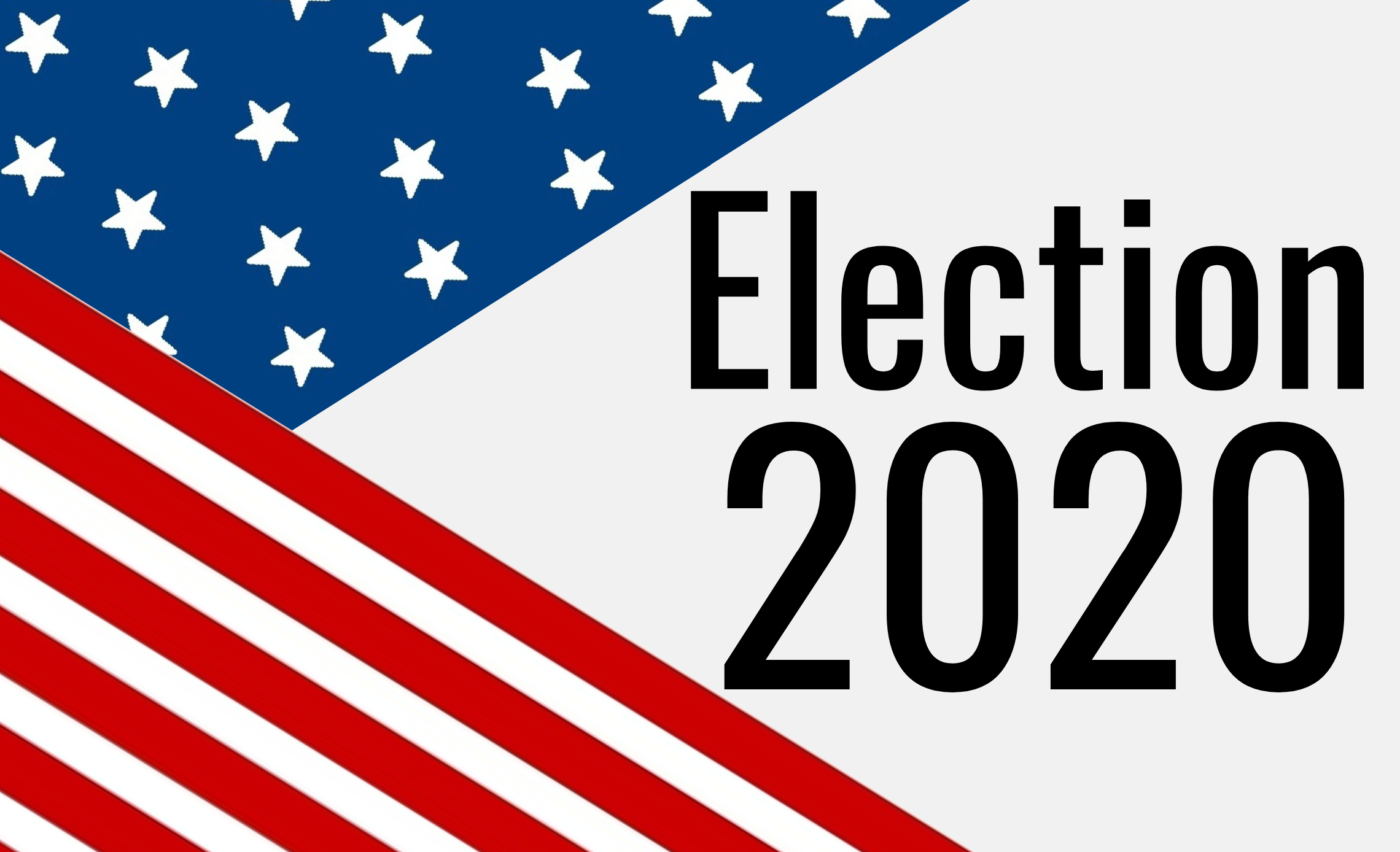by A&E Editor Megh Basu, News Editor Alina Zeng & Staff Writer Tavish Mohanti
As the 2020 presidential election approaches amidst the ever-changing political climate of the US, it has become more important than ever to stay informed. To provide objective insight into this highly-anticipated election, the Smoke Signal has compiled a comprehensive timeline of events leading up to the election and a breakdown of the candidates, along with their political platforms.
Democratic Candidates:
President: Joe Biden & Vice President: Kamala Harris
After seeking the Democratic presidential nomination twice, once in 1988 and once in 2008, Joe Biden secured it this election cycle, with Kamala Harris on the ticket as his running mate. Biden is a six-term Delaware senator first elected in 1972; he also served as Vice President under the Obama administration. Harris is a CA senator who was also previously the CA Attorney General.
Biden’s platform includes key policies such as more accessible COVID-19 testing, supporting the Paris Agreement, free public college, and raising the minimum wage. When it comes to healthcare, he wants to uphold the Patient Protection and Affordable Care Act (ACA)—an Obama-era bill which makes healthcare more affordable for low income households through subsidies and an expansion of medical care delivery. Biden also supports banning assault weapons and redirecting police funding to mental health resources and changing the prison system. On the hot button issue of immigration, Biden has stated that he strongly supports immigration reform and supports a path to citizenship for DREAMers.
Republican Candidates:
President: Donald Trump & Vice President: Mike Pence
Incumbent President Donald Trump is seeking re-election alongside incumbent Vice President Mike Pence. Working as a real estate agent and talk show host, Trump had never sought political office before the 2016 election against former Democratic presidential candidate Hillary Clinton. Pence, on the other hand, served as a member of the House of Representatives from 2001 to 2013 and then Indiana’s 50th Gov. from 2013 to 2017.
Before COVID-19 swept across the country, Trump was running on key issues like growing the economy, creating more beneficial trade deals for the US, and regulating illegal immigration. During his presidency, Trump focused his energy on repealing federal regulations, including the ACA bill signed into law by Obama and appointing conservative federal judges at an unwaveringly fast rate. Now, however, the campaign has shifted to emphasizing the Trump administration’s “law and order” response to racial injustice protests and asserting to the American public that his response to COVID-19 was efficient and proper. Trump continues to highlight his strict immigration approach along the Mexican border, including building a wall, and pulling the US from international deals concerning arms, climate change, and trade, citing his “America First” mindset.
Other Candidates
The following are two third party candidates who will appear on the ballot for the 2020 election. Candidates were included based on the presence of campaign infrastructure and political party backing.
Libertarian Party:
President: Jo Jorgensen & Vice President: Jeremy “Spike” Cohen
Jo Jorgensen, the first female nominee from the Libertarian Party, is running with entrepreneur and Libertarian activist Jeremy “Spike” Cohen. Central to her platform is making the government smaller, reducing tariffs and trade restrictions, and turning to clean energy alternatives like solar power.
Green Party:
President: Howie Hawkins & Vice President: Angela Walker
New York trade unionist and environmental activist Howie Hawkins is representing the Green Party in the 2020 election with his running mate Angela Nicole, a labor activist and veteran. Their main focus: the Green Economy Reconstruction Program. The plan, which promises to establish a structure for 100% clean renewable energy in 2030, is part of his Ecosocialist Green New Deal proposal.
Other Information to Know
USPS
Voting rights have been a hotly contested issue this election cycle. Amidst Trump’s declaration to limit mail-in voting for the election and his rejection of an emergency $25 billion grant, Postmaster General Louis DeJoy began cutting services and removing mail collection boxes. This garnered criticism from those who believe DeJoy was instructed by Trump to slow down mail-in orders to skew the election in his favor.
Facebook Election Interference Controversies
Addressing election interference concerns that have been a pressing issue since the 2016 election, Facebook announced they will not accept new political advertisements to run in the final week before the election, citing the reason that journalists won’t have time to fact-check them so close to election day. However, they have stated ads bought prior to that will be allowed to run in that week. They have also stated they will not fact check political ads and will do nothing to prevent politicians from spreading misinformation. These restrictions will lift after Election Day.
Faithless Voters Verdict
In July, the Supreme Court voted to uphold a law that punishes “faithless votes”— electors who do not vote for the presidential or vice-presidential candidate they pledged to. The ruling states that electors do not have the discretion to reverse the statewide popular vote. This comes after a number of electors who pledged to vote for Hillary Clinton in 2016 voted for third-party individuals instead.
As a part of this complete coverage, read the 2020 Presidential Election debate recaps here.
Comprehensive Timeline of Events
Cover Graphic and Interactive Timeline by Web Editor Mahek Bhora


“USPS emergency $25 billions grand” means about $100 per US citizen! A subsidy for mail-in voting? Unbelievable expensive!!